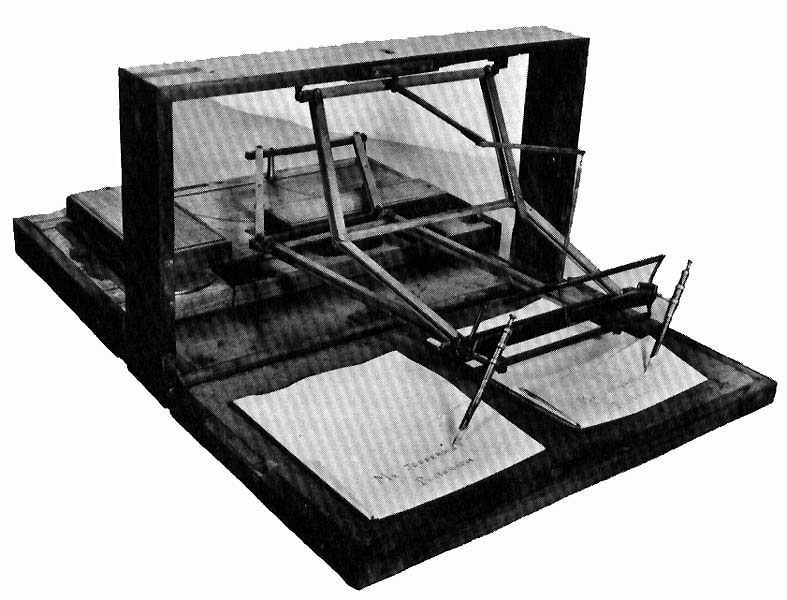(Image: One of the polygraphs used by Thomas Jefferson, a portable version —http://de.wikipedia.org/wiki/Bild:1804_Jeffersons-Polygraph-Monticello_Cville_VA.jpg… Neat “machine.” I saw it in person visiting Monticello once and was excited because I’d just read we know what we seem to know about Rome thanks to Cicero, who seems to have made copies of all his correspondence. Jefferson has always been a hero of mine, and the more I learn the more important he seems to be, even as other figures diminish in my eyes, but that’s another blog, of course. For this post I remembered Jefferson’s polygraph, as it literally penned two copies of what you were writing.)
I read once that you tend to write like you’re reading, meaning if you’re reading Clive Barker and writing at the same time you might be surprised to see your writing resembling Clive Barker, for example. And then I found it to be true! We pick up little mannerisms, sometimes, from those around us, and so on, but it seems true enough that any of us might be liable to mimic or pick things up just as we might influence those we hang with in the same way. But when it comes to writing this is kind of neat. In fact you can use it. For one thing, you might not jump around too much in your reading if you’re cranking out those last few chapters of your own book, at least not too wildly in terms of style of what you’re reading. And it’s a neat way to inform, guide, and influence your own writing — Read someone you admire the writing of while you write or edit. (The larger lesson is READ! Those who read a lot never feel like they do, those who don’t care to read much might not make the best writers, obviously, right?)
Continue reading “The Copy Trick to Leveling Up Your Writing”



